Before Metal Slug Tactics, whenever I thought about the classic series, ‘charm’ and ‘simplicity’ were the first words that came to mind. SNK’s legendary run-and-gun series was a lesson in presentation and approachability; you could learn its rules and enjoy its chaotic battles against soldiers, mummies, and aliens in just a few short seconds.
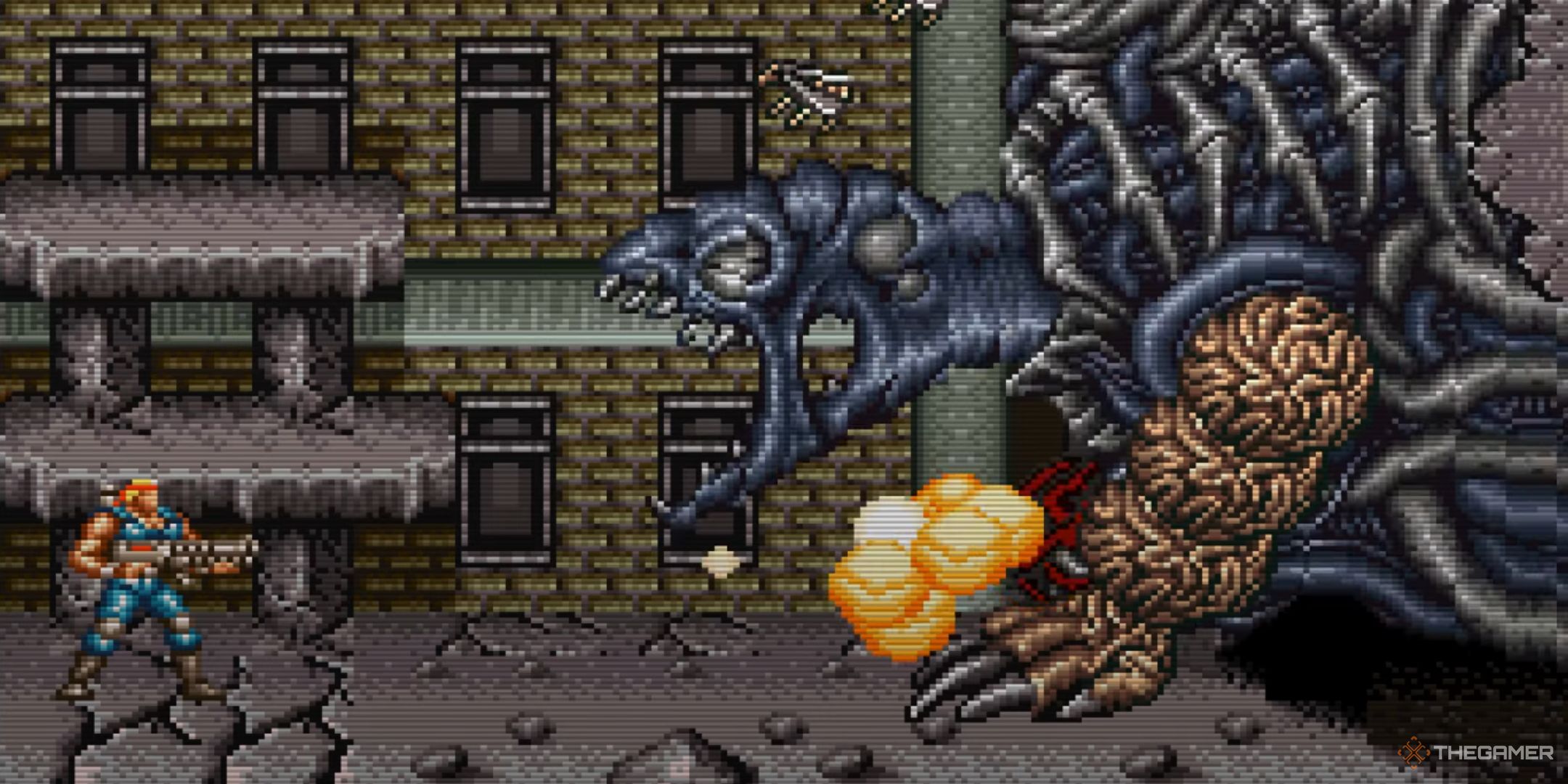
Related
Who Did The Run And Gun Better, Contra Or Metal Slug?
Both Contra and Metal Slug are legendary run ‘n gun franchises. Personally, while I think it is undeniable that Metal Slug is the better looking series of the pair, I think Contra has some of the best playing games in the entire genre. Which franchise do you think reigns supreme?
However, things have changed with Metal Slug Tactics. The times of running in one direction, shooting everything that moves, and searching for new weapons are long gone. Now you have to think about every single move you make in levels laid out in grid form and filled with obstacles and enemies. Developer Leikir Studio was clearly inspired by Final Fantasy Tactics and other well-known games like Disgaea, adding a small twist to the genre.
You’ll create a party of three characters with unique gear and skills before completing missions in a roguelite structure. You select a location, play three stages, face a boss, and repeat until your whole party is defeated or you end up victorious. As you make progress, you get random upgrades to your weapons or abilities, add new active or passive skills, and earn coins and unique resources called “assets” that can help you when in tough spots. When you fail a mission, everything is lost and you start from scratch with the chance to spend your coins (now turned into “credits”) on some specific unlocks — like the random chance of getting a new skill, for example.
This will be familiar territory to fans of roguelites. However, as a follower of the saga, Metal Slug Tactics felt surprisingly tough. I failed a couple of times at the first boss, and it took about eight hours to successfully finish a run. It took me ten hours to get the hang of all its systems upon systems, and that was all while playing on the lowest difficulty — the only one available until you beat the final boss for the first time.
Metal Slug Tactics might be a drastically different game from everything else in the series, but you can see the series’ DNA peeking through in clever design choices. For example, you’re always rewarded for moving your units as far away from their starting positions as you can, and they earn stats known as Dodge and Adrenaline: the former gives defense points to your character, and the latter is an attribute you need to perform special moves.
At first, it might feel counterintuitive — why would you move one of your characters so far away from their spawn, sometimes even leaving them exposed if there’s no cover around? I struggled for hours with this, until it finally clicked: I was playing wrong. I was playing cautiously, the way I usually play turn-based tactical games, instead of being aggressive and audacious. You’re rewarded for always being on the move, just like in other games in the series, adding a clever twist that sets it apart.
For example, realising that it was wiser to ignore regular enemies during boss fights and dedicate my turns to dealing damage to the boss made my battles end significantly quicker. I went from spending dozens of turns trying to beat them to needing only three or four turns, depending on the circumstances and how well-equipped I was.
Another great addition is the Synchronization mechanic. You can attack an enemy with one character and trigger bonus attacks with the rest of the units in range. This mechanic starts simple, but it gets increasingly complex when you consider the uniqueness of each character, the different types of weapons, and the synergy that can be produced between multiple skills. When you land on a good team, it feels like everything you do could help you find victory in only a few turns.
There are nine playable characters — you start with three and you need to unlock the others. Each one has a nice pool of abilities and four loadouts, which means a great variety of options for your battles.
Get derailed by a bad move though, and your entire crew might be wiped out in seconds. Metal Slug Tactics shines in how it manages to replicate that high-adrenaline experience from the other games in a genre that feels less suited to it.
Many well-thought-out decisions and mechanics keep you engaged. Missions have different side objectives, like defeating all the enemies, only the ones marked, surviving a certain number of turns, escorting a character, and more. There’s plenty of enemy variety, too. I smiled when I saw the classic mummies, in all their glorious retro sprites, and I clapped when one of my characters was transformed into one, reducing my movement but giving me new attacks like being able to throw my head around.
Not Everything That Shines Is A Heavy Machine Gun
Metal Slug Tactics takes its time to teach you everything you need to know through dozens of tutorial windows, and though it does a solid job, some of its presentation could have been better.
The UI isn’t consistent for starters. A walkie-talkie, which lets you revive your units, has two different icons with no clear reason why. My collected coins were grey in my inventory but gold when I was selecting missions, leading me to assume early on that the game had multiple currencies.
The game’s camera is also wonky enough to leave players disoriented fairly often, moving around so it shows you parts of the level that aren’t involved, ruining the moment and leaving you confused.
There are also bugs involving actions that sometimes don’t work as intended, information that isn’t displayed correctly, and eventual frame drops in certain areas, among other problems.
Unfortunately, the presentation isn’t the only aspect that has issues. When it comes to the coins you can earn between stages, it feels like you don’t get enough of them in the lowest difficulties. Upgrades between stages were expensive, so I ended up skipping them most of the time. It was the same between runs, where you can use your credits to unlock new loadouts or abilities for your characters. The only permanent upgrades in the whole game felt restrictive, making me feel that I was making very little progress during my first hours.
The only unlocked upgrades you can use before starting a new run are the loadouts for your characters. Every weapon or ability upgrade you can get during a run is randomized.
While you get better rewards in higher difficulties, you first need to finish a successful run in the ones you have unlocked from the beginning. This can take many hours depending on your skills.
These issues aren’t small, and I find it difficult to wholeheartedly recommend a game that only ‘gets good after X hours’. At the same time, with over 20 hours and counting, Metal Slug Tactics makes me want to get back to it, play a quick run, and try to unlock everything that’s here to unlock. This is far from the revival I was expecting for the series — and I’d still love a classic 2D entry — but if it catches the attention of new generations, I’m here for it.
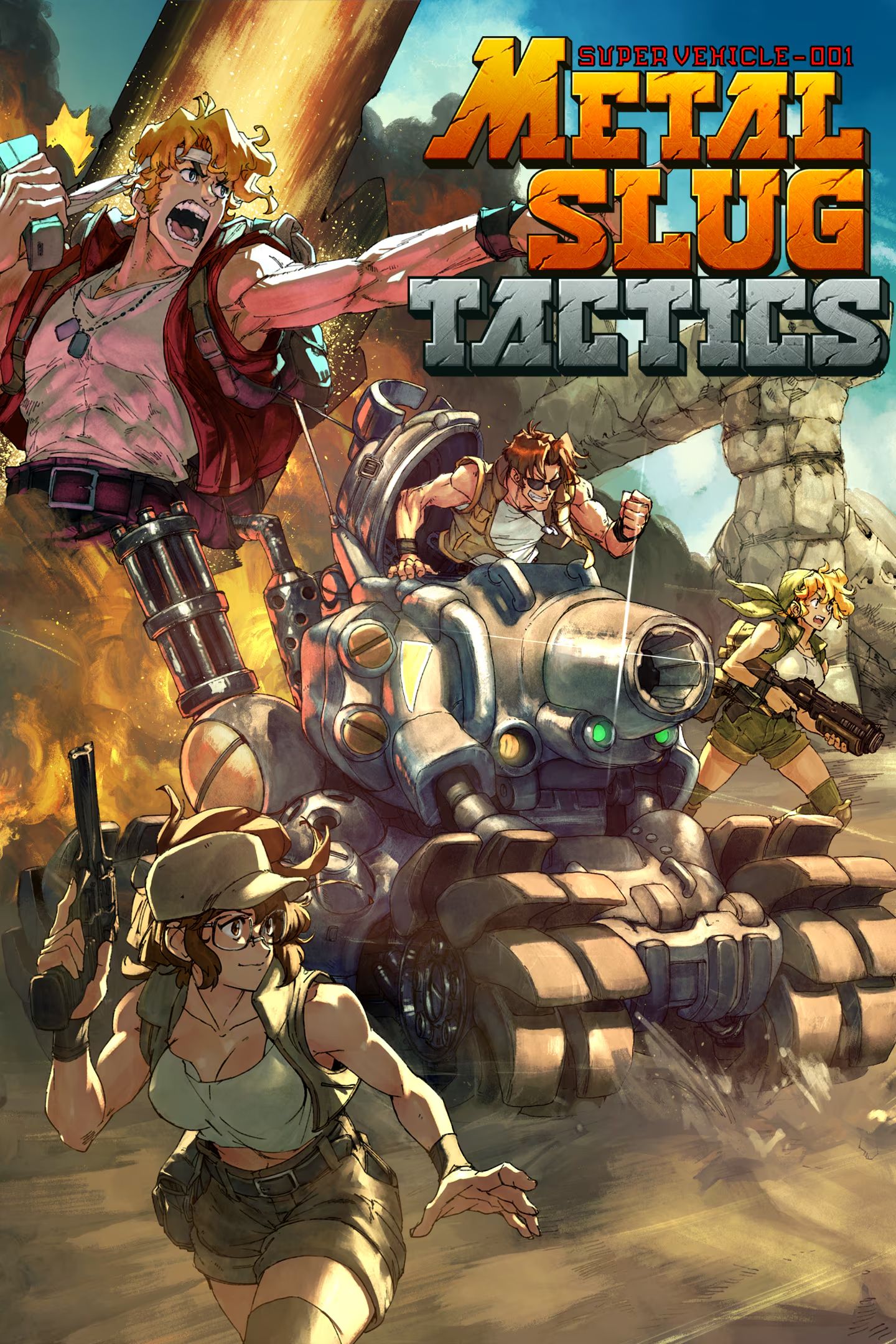
Played on PC.
- Simple combat with many options and tools
- Excellent visual presentation
- Great transition between genres
- Some bugs can harm the experience
- The rewards system needs an adjustment
- It can be daunting during the first hours
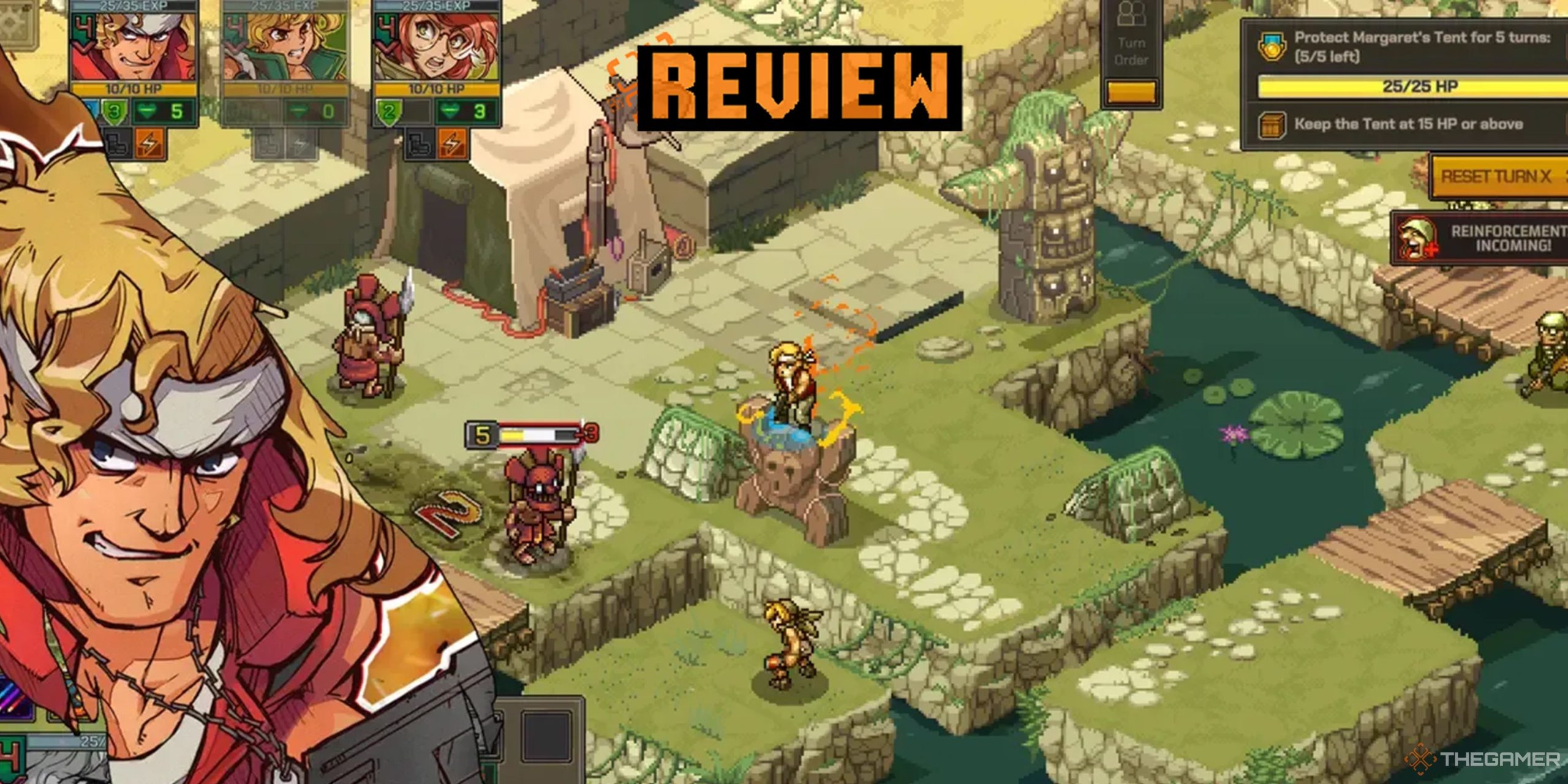

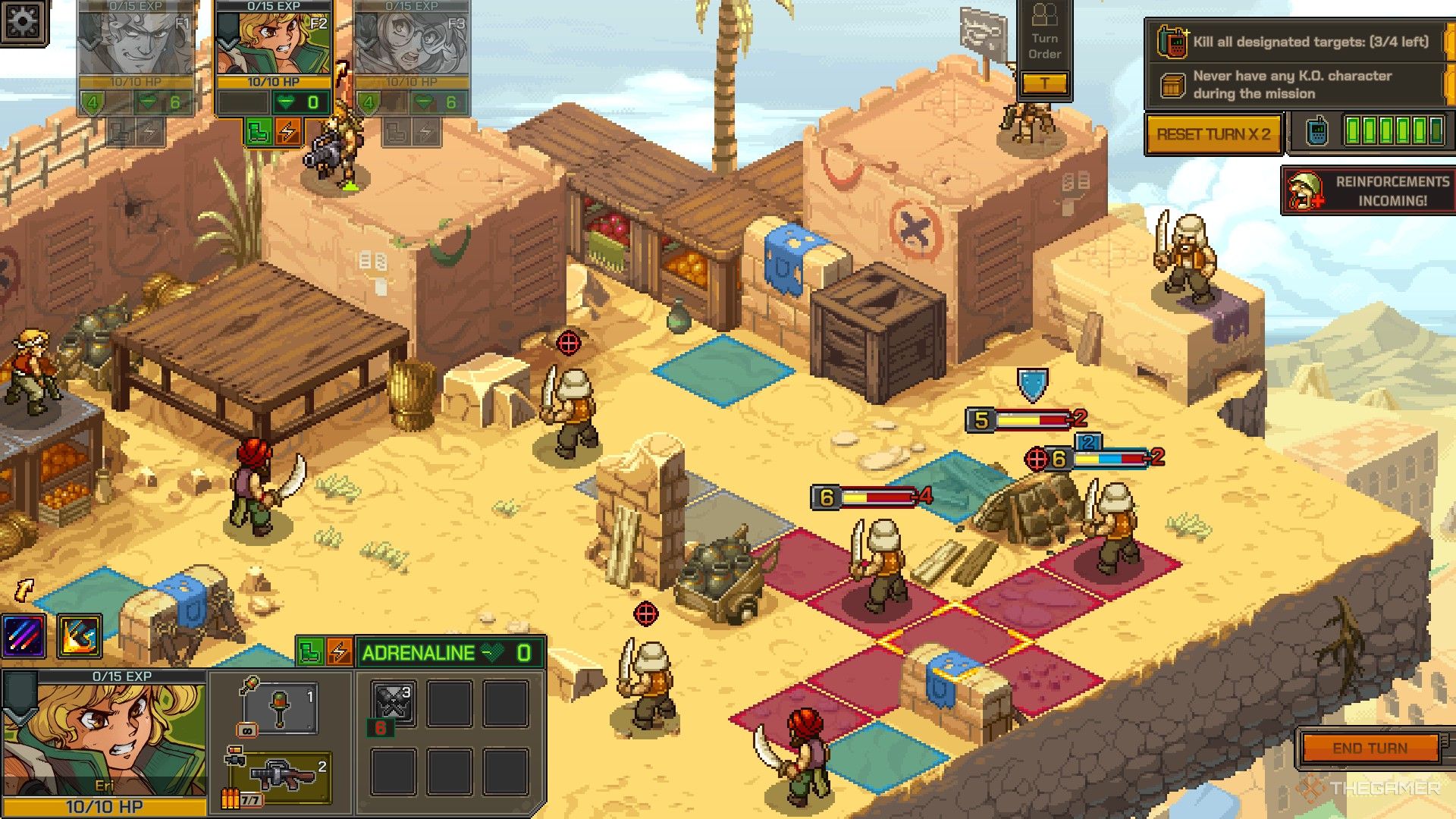
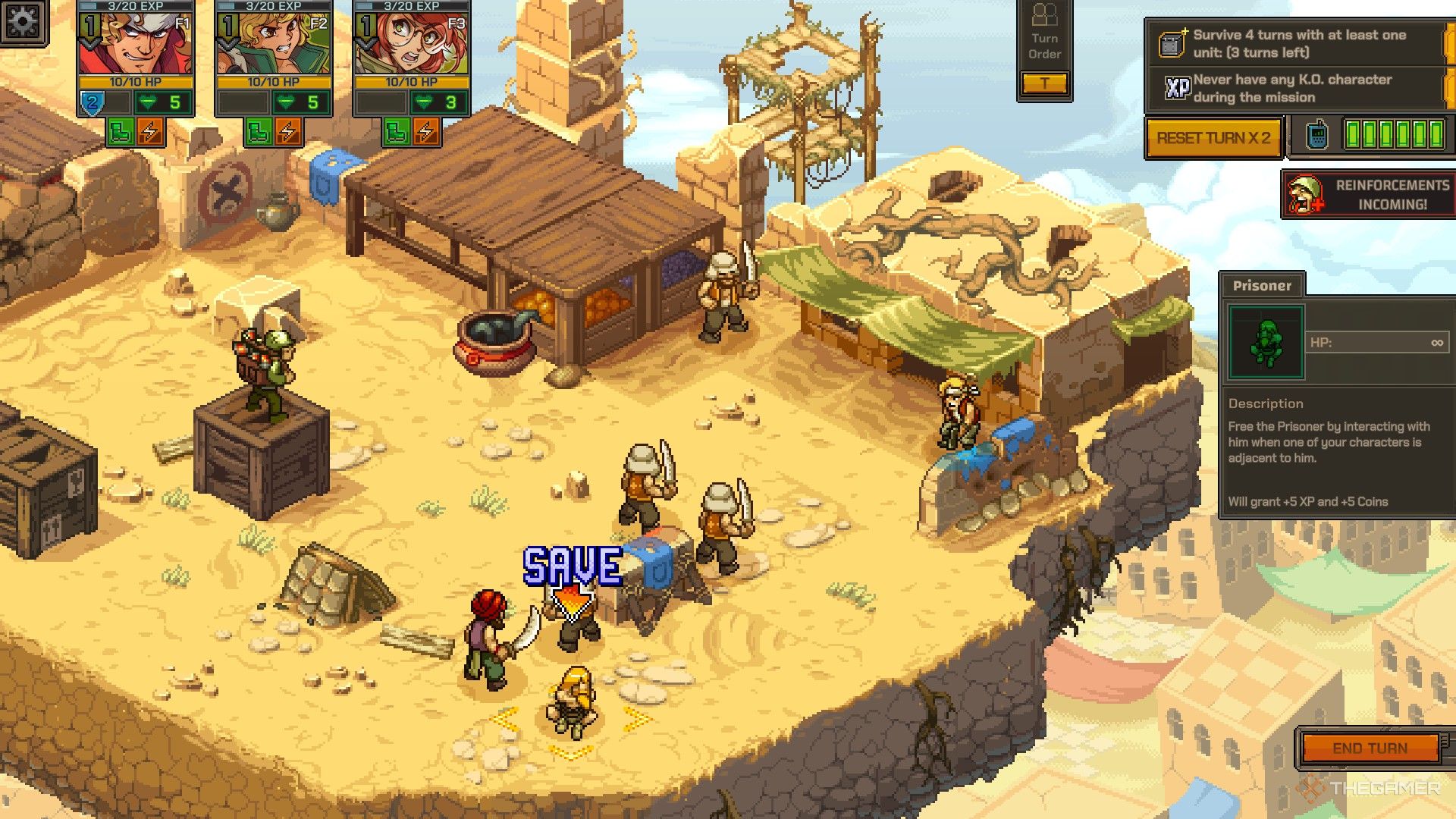
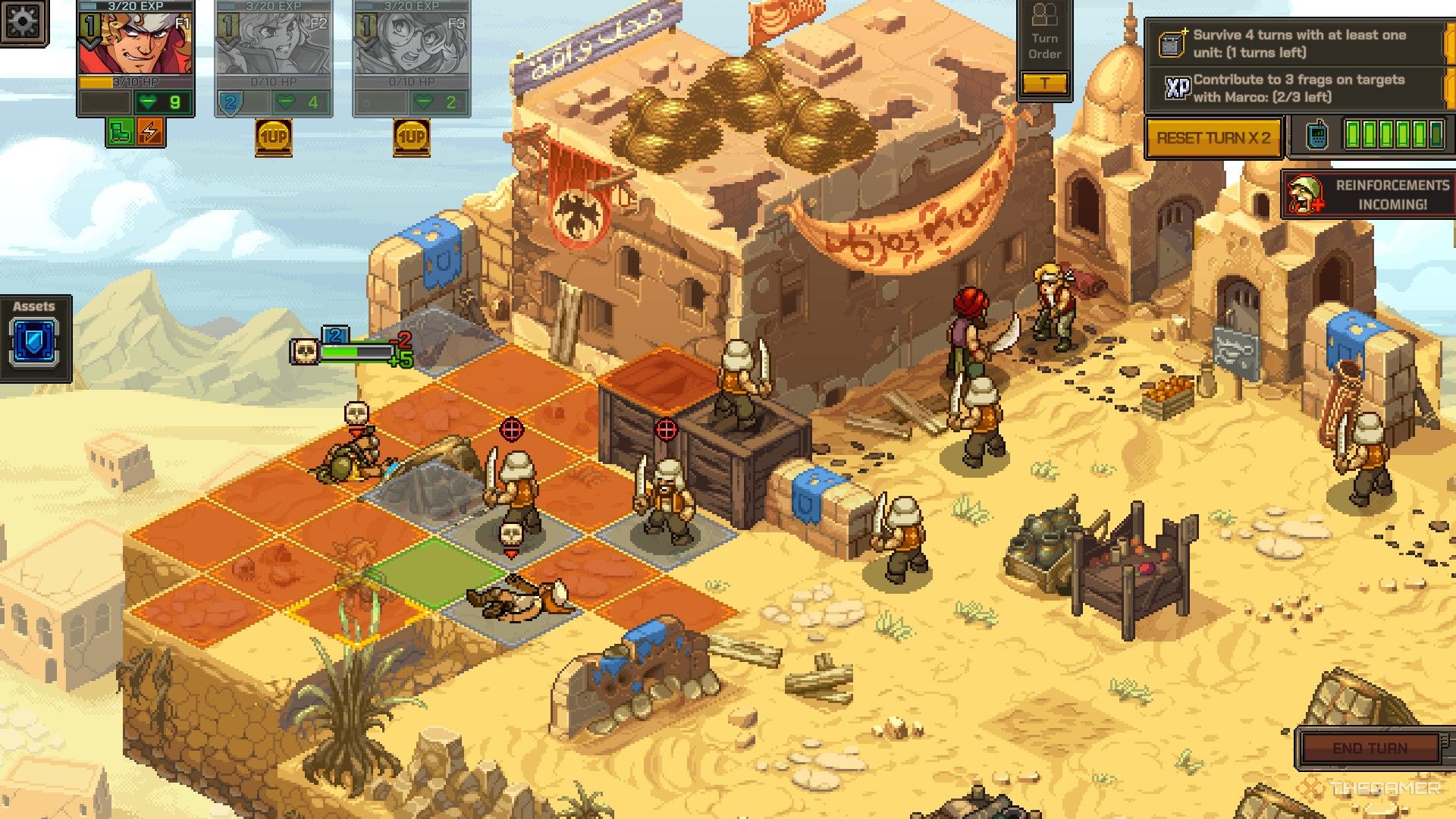
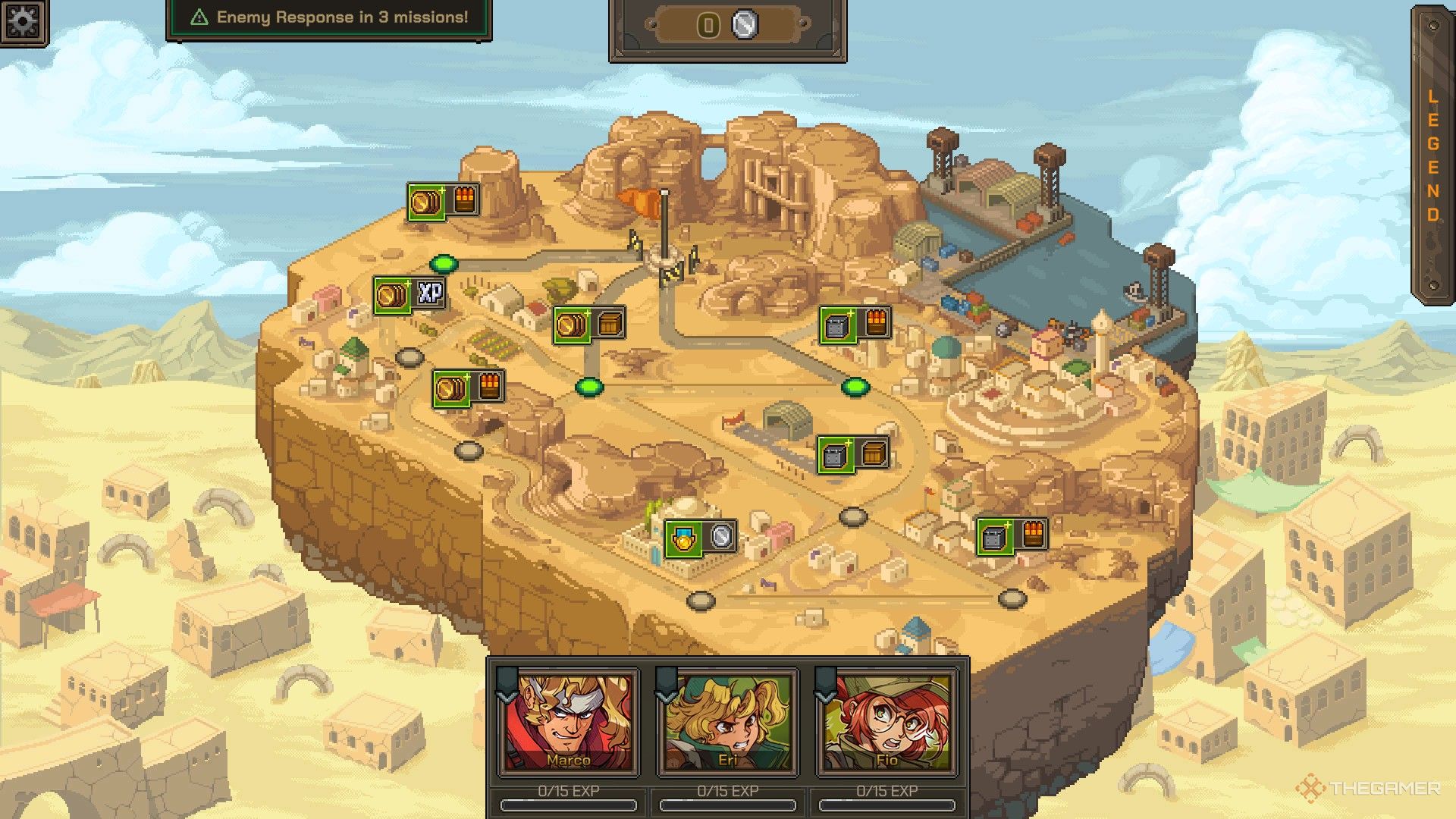
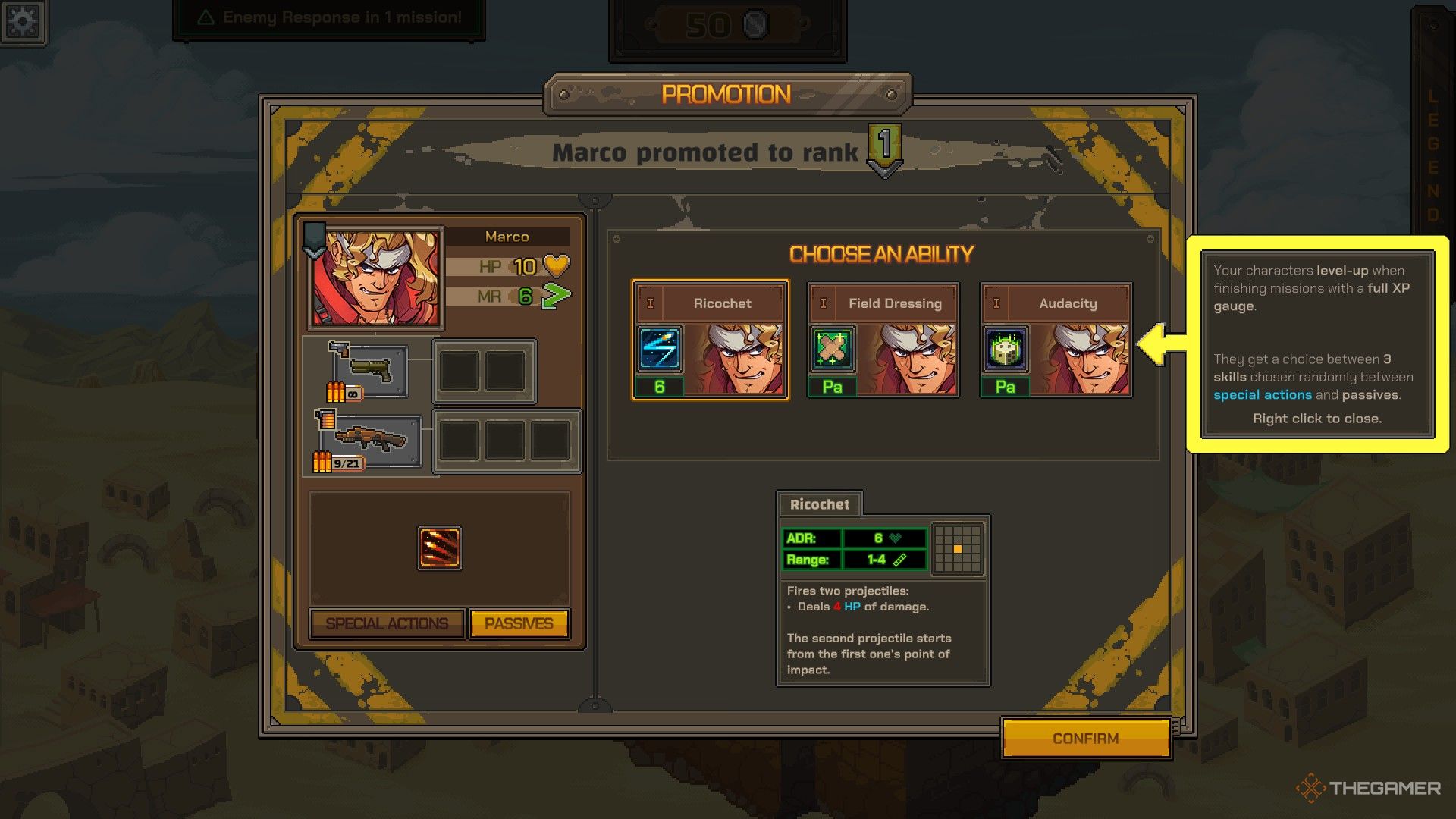





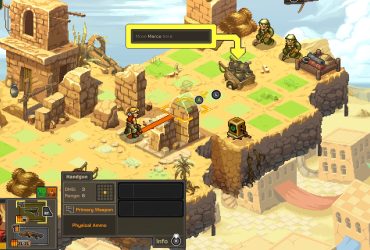



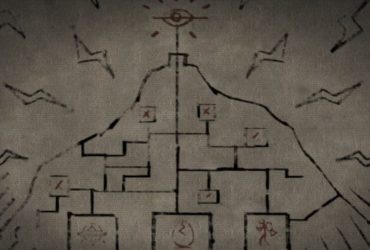
Leave a Reply